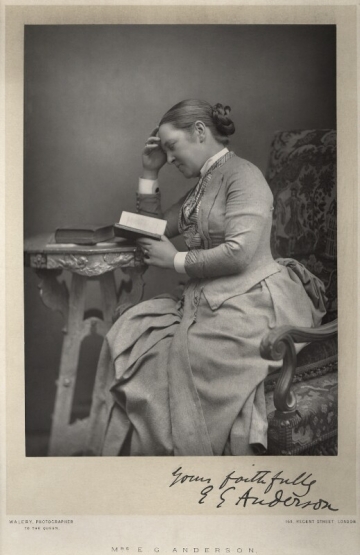Elizabeth Garrett Anderson

- Born: 1836
- Died: 1917
- Occupation: doctor
- Claims to fame: first female doctor to qualify in the UK; also town mayor of Aldeburgh – the first female town mayor in England
Becoming a doctor
Elizabeth Garrett was born in London and later lived in Suffolk. She had several siblings, one of whom was Millicent Garrett (later Millicent Garrett Fawcett), who was the president of the National Union Of Women’s Suffrage Societies (NUWSS). Elizabeth married James George Skelton Anderson in 1871 and had three children. She studied chemistry and nursing, and applied to several medical schools, all of which refused to take her. She used a legal loophole and got a doctor’s licence from the Society of Apothecaries in 1865, then qualified as a doctor from the University of Sorbonne in France in 1870. The Medical Act of 1876 finally allowed British universities to accept women on medical degrees. Elizabeth opened the St Mary's Dispensary for Women and Children to treat the poor; this became the New Hospital for Women.
Campaigning for the vote
At the age of 18, Elizabeth met the campaigner Emily Davies. She was a founding member of the Kensington Society in 1865. Both Emily and Elizabeth signed the 1866 suffrage petition, which they presented to MP John Stuart Mill at Westminster. In June 1874, she led a large suffrage meeting. She was a member of the Central Committee of the National Society for Women’s Suffrage and also belonged to the London Society for Women’s Suffrage from 1906 to 1907. In 1908, Elizabeth moved to the WSPU and took part in a ‘raid’ on the House of Commons. She took part in the WSPU’s ‘From Prison to Citizenship’ march in London on 18 June 1910 and headed a large, peaceful representation by the WSPU to the Houses of Parliament on 18 November 1910, ending in the violence of ‘Black Friday’. Elizabeth publicly withdrew her support for WSPU militancy after their subsequent escalation of tactics, and withdrew from public life completely in 1913.
Glossary
- Society of Apothecaries – as a doctor, you had to belong to a society that represented your profession and issued your licence
- Kensington Society – women’s discussion group that organised the first petition on women’s suffrage
Questions
- What kind of person do you think Elizabeth was?
- What do you find most interesting about her story?
- How typical do you think she was of suffragists?
Useful resources
- Elizabeth Crawford, The Women’s Suffrage Movement: a reference guide, 1866–1928 (Routledge, 1999)
- HA Suffrage Case Study - Elizabeth Garrett Anderson
143.5 KB PDF document - HA Suffrage Case Study - Elizabeth Garrett Anderson (Word)
344.4 KB Word document
